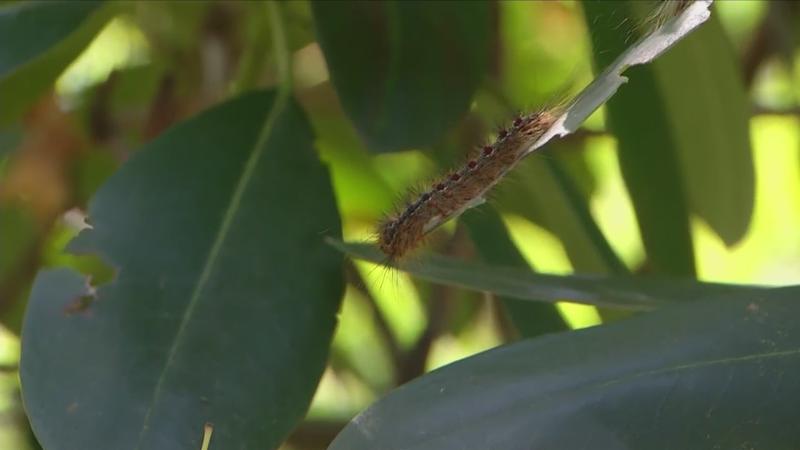Good Question: Another Gypsy Moth takeover in western NY?
[anvplayer video=”5109676″ station=”998131″]
ROCHESTER N.Y. (WHEC) — Let’s answer a good question about a bug takeover.
Gypsy Moth caterpillars can sweep through in waves, taking over your yard and stripping leaves from our trees. We’ve had a rough stretch the last two summers, so will it be bad again this year?
Karen asked:
“[I’m] just wondering if we should expect the same problem as last year with the Gypsy Moth caterpillar invasion on our trees? if so, is there anything we can do now to help alleviate this problem?”
Let’s tackle the first part. I spoke with Liam Somers. He’s an insect expert, an entomologist, with the New York State Department of Environmental Conservation.
“Should be starting to emerge right now,” Liam Somers said.

Yes, they’re coming back. That’s the bad news. The good news?
“This is likely going to be the last year of that big population boom and after this summer they should start winding down,” Liam Somers said.
Part of that is nature fighting back itself, naturally occurring viruses that only affect caterpillars. They’ve seen a lot of that in western New York.
We’re still going to see some damage. The caterpillars can eat up to a square foot of leaf surface in a single day. When the population surges, they can damage thousands of acres.
Is it too late to do anything about them now? Not if you hurry.
“Because they are just emerging right now as a caterpillar, that’s the stage where you do want to treat your property," Liam Somers said. "A lot of options – I know BT [Bacillus thuringiensis], the soil dwelling fungus that naturally occurs. That’s one of the main control methods. you can purchase that online just about anywhere.”
There are also sticky band barriers you can put on a tree that will stop some of them.
“Some trees are a little more sensitive to defoliation than others," Liam Somers said. "We do expect some degree of tree mortality but even without how bad it was last year we’ve seen a lot of these trees bounce back."
You heard it there from our expert, just get through one more summer. Then we’ll revisit this when the next population booms, 10 to 15 years from now.
You can learn more about the treatment and lifecycle of Gypsy Moths, also called Spongy Moths, on the website for the state’s Department of Environmental Conservation.